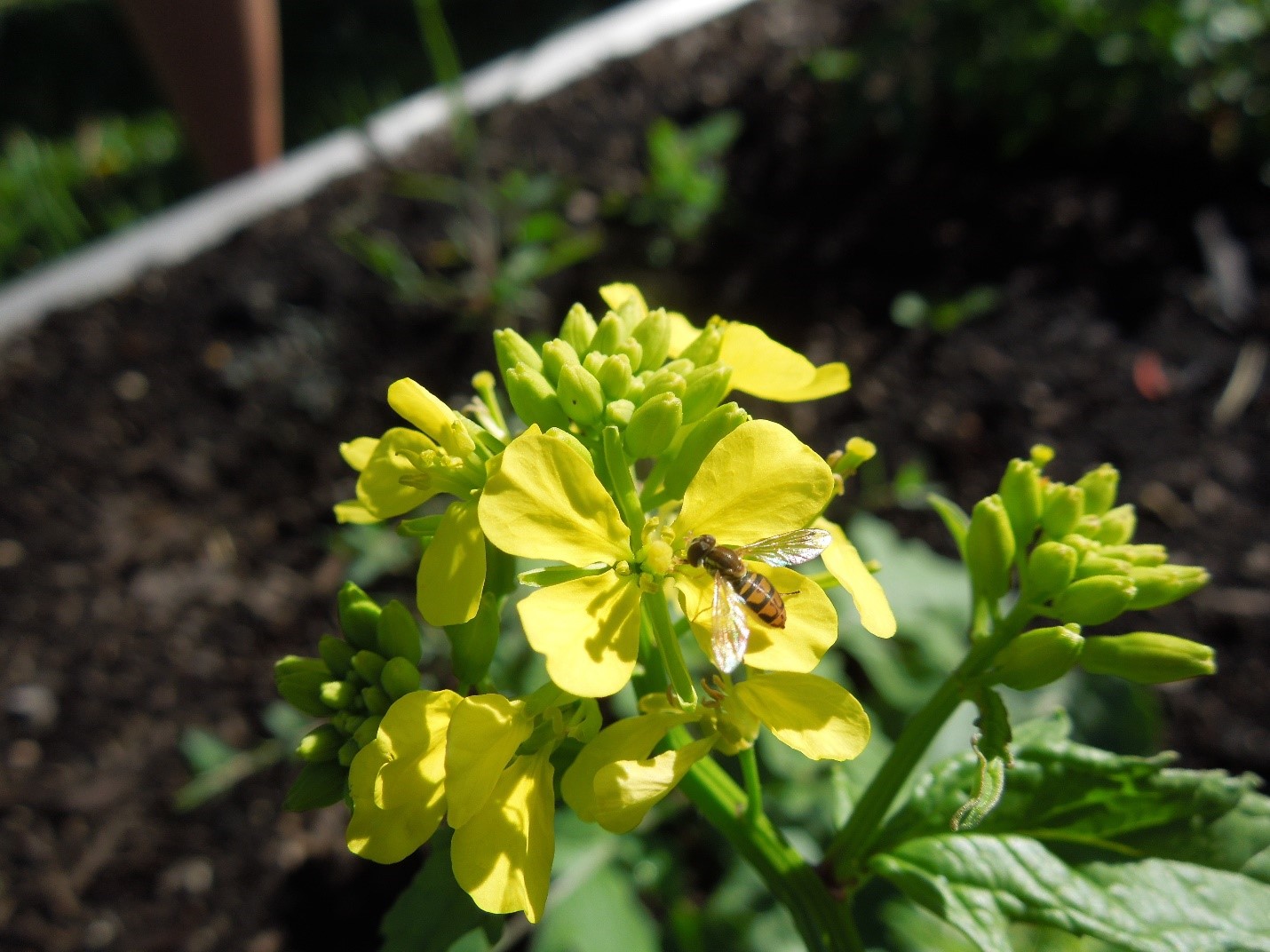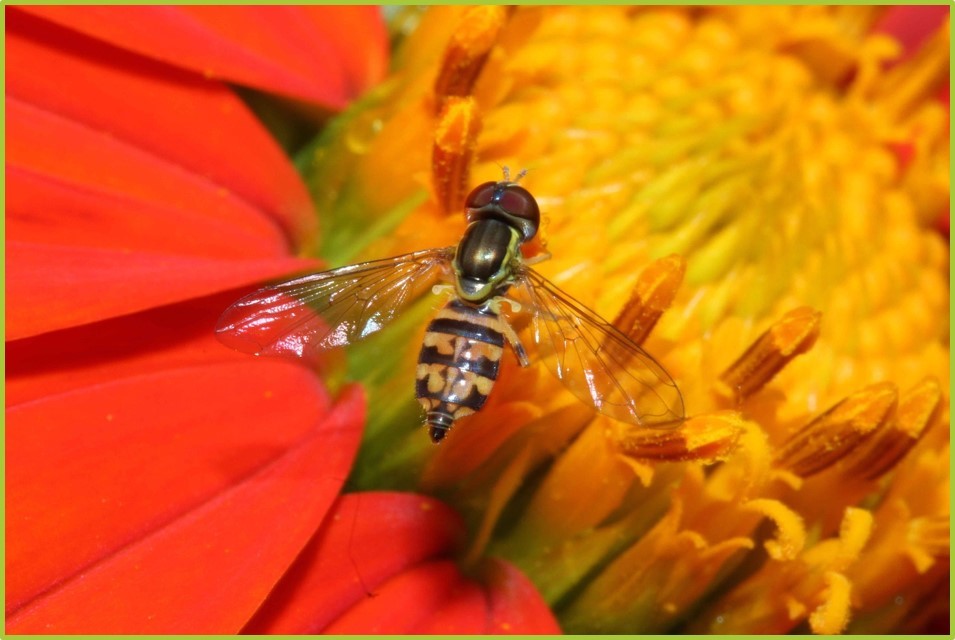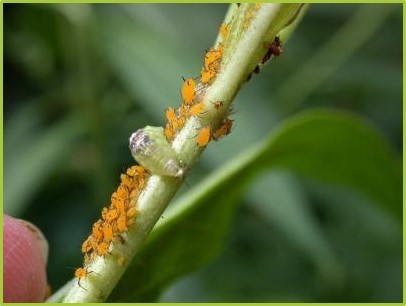Issue 5, June 18, 2019
Hover Flies
Hover Flies: Not sweat bees but pollinators and aphid eaters
Hover flies (aka syrphid flies or flower flies) are covering any nectar-producing flower in the garden this spring. These flies, commonly mistaken for bees, are one of our most prolific pollinators and aphid eaters in the Illinois garden but care must be taken to protect them when spraying pesticides.

Adult Hover Fly (Photo courtesy of Ken Johnson)
Hover flies are excellent fliers, flying backwards and forwards and hovering over their beloved flowers. Hover flies are yellow and black bee-mimics that feed on pollen, nectar and honey dew (frass of phloem feeders like aphids.) They mimic bees and or wasps for protection against predators such as birds. They are easily distinguished from bees because they are shiny while bees are fuzzy. They are easily distinguished from wasps in that they have two wings and wasps have four.

Adult Hover Fly (Photo courtesy of Phil Nixon)
With many generations per growing season, they are here to stay. The female hover fly will usually lay her eggs on or near aphid colonies and in two to three days the larvae will hatch. The larvae, which is technically a maggot, is muted green, legless, worm-like and can be found on the undersides of the leaves eating aphids and other small soft bodied insects like thrips, scales, caterpillars and mealybugs. These larvae are great garden warriors and can be put in the same category of ladybugs and lacewing larvae in terms of the effectiveness in demolishing an aphid population. The larvae grasp the prey with their jaws, hold them up in the air, suck out their body contents and toss the exoskeleton aside. The larvae feed for about seven to ten days before they pupate. According to Cornell University, each larva can eat up to 400 aphids. So, if you see an aphid or mealybug infestation in your garden be sure to turn over the leaves to look for these beneficial maggots before you spray.

Hover Fly Larva (Photo courtesy of Margaret Hollowell)
If you feel the pest population is too high and need to spray, try to avoid broad-spectrum pesticides. If beneficial insects are detected, oils, soaps and microbial pesticides like Btk are best option to use in your pest management plan. Although chemicals that are derived from nature will still kill some beneficial insects they do not have long residuals on the plants and these insects will repopulate the garden. Note that these are not as effective as other pesticide options but will ensure good bugs are eliminated from the garden.
Neem oil is a biological pesticide derived from the seeds of neem trees and is used to control whiteflies, mealybugs, aphids, leafhoppers, mites and scales on ornamentals, trees, shrubs and in the vegetable garden, exhibits fungicidal properties. The insects must eat the treated plant to be affected so most of the time bees and pollinators are not harmed.
Potassium salts of fatty acids are the active ingredient in insecticidal soap. Insecticidal soaps control. Insectidal soap is more effective on soft bodied insects like aphids, whiteflies, and mites. Flying insects may not be as susceptible but their immatures may be killed.
Microbials are derived from microorganisms that cause disease only in specific insects. Bacillus thuringiensis (Bt) subspecies kurstaki (Btk) controls leaf-feeding caterpillars. This microorganism occurs naturally in dead or decaying organic matter in the soil. Because it targets caterpillars, it does not kill beneficial insects and pollinators.
Author:
Kelly Allsup